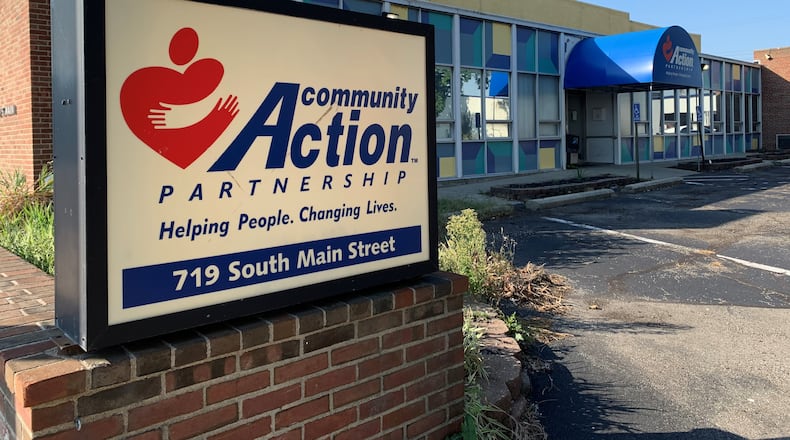For a single person, that means it rose from $20,385 to $23,782.50. For two people, it went from $27,465 to $32,042.50; and for a family of four, the threshold rose from $41,625 to $48,562.50, according to U.S. Department of Health & Human Services statistics.
Inflation, rising energy costs and supply chain problems nationwide have increased utility rates in Ohio and elsewhere.
Gov. Mike DeWine announced the percentage increase on July 27. The assistance programs are overseen by the Ohio Department of Development and Public Utilities Commission of Ohio.
The threshold of eligibility for heating assistance was already at 175% of the poverty line, but for PIPP it was only 150%, said Keelie Gustin, chief policy officer, Miami Valley Community Action Partnership, which serves Darke, Greene, Montgomery, Preble and Warren counties.
Previously state officials worked out that payments as a percentage of income would actually be more than the average household’s electric bill, if that household’s income was 175% of the poverty line, she said. So the program cutoff was kept at 150% because going higher “wasn’t a win” for customers, Gustin said.
But with energy costs rising, now some ratepayers may benefit from the PIPP average, she said.
Only 4% to 5% of PIPP participants have incomes above 140% of the poverty line now, but that’s likely to increase, Gustin said.
While the move made more Ohioans eligible for assistance, the Ohio Department of Development did not have estimates of how many customers might be affected, said Megan Nagy, public information officer for the Ohio Department of Development
There is a “slight increase” in PIPP enrollment so far this year, she said.
Who can get help?
Assistance through PIPP is available for customers of a half-dozen Ohio electric and natural gas providers, Nagy said. Those are American Electric Power, or AEP; Cleveland Electric Illuminating; Dayton Power & Light, or AES Ohio; Duke Energy; Ohio Edison and Toledo Edison.
“The expanded eligibility will be funded by an increase in the Universal Service Fund rate case,” Nagy said. The Universal Service Fund is paid by all customers, specifically to provide assistance to low-income households and operate consumer education programs.
Customers can apply for PIPP through local energy assistance providers, many of which are community action agencies, Nagy said.
Under PIPP, utility payments are based on a percentage of the monthly household income and are consistent year-round. Customers who make their payments on-time and in-full may have the balance of their bills eliminated.
Participants pay 10% of their monthly gross household income for electric service alone, or for electric and natural gas combined, according to the Ohio Department of Development. There is a minimum monthly payment of $10.
People enrolling in PIPP must report the previous month’s total income from at least the previous 30 days for every member of their household, except wages earned by dependents who are still under age 18, according to the Ohio Department of Development.
Participants must re-verify their income each year. Failing to report changes in income or a change in household residents, or missing a payment can result in being dropped from the program.
Miami Valley Community Action Partnership can take applications in person or through its website, miamivalleycap.org, Gustin said. Its main office is at 719 S. Main St. in Dayton, but the agency also has locations in Darke, Greene and Preble counties.
The website includes a checklist of documents required for approval; the more complete an initial application is, the more quickly it can be processed, Gustin said.
There is increased federal funding for the Low Income Home Energy Assistance Program, or LIHEAP, she said. That program helps pay for heating and cooling, weatherization and energy-related home repairs.
Need and response
Miami Valley Community Action Partnership serves urban, suburban and rural areas, but demand for assistance isn’t evenly distributed, Gustin said.
“We’re really seeing this affect most of our clients in the urban areas,” she said.
Requests for help have increased by at least 60% at the Dayton office over the last few years, Gustin said.
People need utility help not just for month-to-month bills, but also to pay deposits when transferring service to a new address, she said.
Applications for assistance are increasing, Gustin said. That includes rental assistance, which the agency also offers through federal COVID-19 relief funding.
“It has been a very busy time for us,” she said. “We are completely overwhelmed with applications right now.”
Miami Valley Community Action Partnership has money for more utility subsidies, but a continuing bottleneck is hiring and training enough staff to process and administer benefits, Gustin said. Qualifying people for assistance is a complex process which takes 6 to 8 months of training, even as programs keep changing, she said. The agency is still trying to mitigate possible COVID-19 exposure in its office, which can also slow things down, Gustin said.
Community action agencies serving other Miami Valley counties did not reply to questions.
Where to find help with utility bills
Public Utilities Commission of Ohio
https://puco.ohio.gov/utilities/electricity/resources/utility-assistance-programs
Ohio Department of Development
https://development.ohio.gov/individual/energy-assistance/1-home-energy-assistance-program
NeedHelpPayingBills
https://www.needhelppayingbills.com/html/ohio_heating_and_utility_assis.html
Ohio Association of Community Action Agencies
https://oacaa.org/find-an-agency/
Miami Valley energy assistance providers
https://development.ohio.gov/individual/energy-assistance/energy-assistance-providers
Butler County: Supports to Encourage Low-Income Families, 513-217-7930
Clark County: Opportunities Industrialization Center of Clark County, 937-342-3186
Darke County: Miami Valley Community Action Partnership, 440-538-6999
Greene, Miami, Montgomery and Preble counties: Miami Valley Community Action Partnership, 937-514-4777
Warren County: Warren County Community Services Inc., 513-970-6737
About the Author

